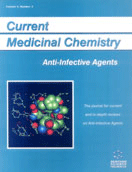Abstract
Brucellosis is a highly contagious bacterial zoonosis that affects millions of people worldwide. The infection induces debilitating and incapacitating severe diseases, with mild to serious complications. The intracellular localization of Brucella spp. makes treatment difficult, since most antibiotics, although effective in vitro, do not actively pass through cellular membranes. Therefore, complete eradication of the microorganisms is difficult to achieve, and the incidence of relapses is rather high. Hence, drug delivery systems such as liposomes and biodegradable microspheres should be most useful for targeting these intracellular sites where the organisms are located. Many examples and promising results of the use of drug delivery systems for the treatment of intracellular infectious diseases already contribute to the literature and demonstrate the great potential of these technologies. In the present manuscript, we review our work on the development of new approaches to an effective pharmaceutical dosage form for the treatment of brucellosis. For this purpose, we prepared and evaluated a number of liposomal and microparticulate formulations for the efficient encapsulation of gentamicin and a competent therapeutic activity towards infected models in vitro and in vivo. Liposomes loaded with gentamicin sulphate eliminated completely intracellular Brucella in infected cultured monocytes-macrophages. In vivo, gentamicin-loaded cationic liposomes produced a protective effect in mice challenged with a lethal dose of B. abortus. Further, gentamicin sulphate microencapsulated into poly(lactide) (PLA) and its copolymers with glycolide (PLGA) provided controlled release of the drug, typically with biphasic profiles, what may represent an advantage over the use of liposomes. In vitro, this biodegradable particulate delivery system was efficiently phagocytosed, induced cell activation and reduced intracellular Brucella infection in cultured monocyte-macrophages. In conclusion, liposomes and biodegradable microspheres loaded with antibiotics appear useful for targeting monocytes and reducing intracellular Brucella infection; these delivery systems should represent a promising alternative approach for the treatment of brucellosis.
Keywords: drug delivery systems, gentamicin sulphate, liposome stability
 12
12

